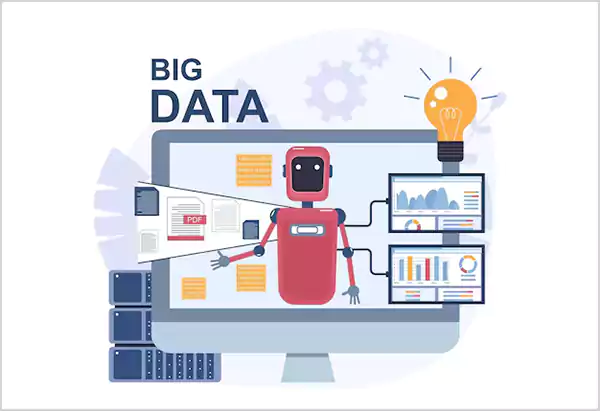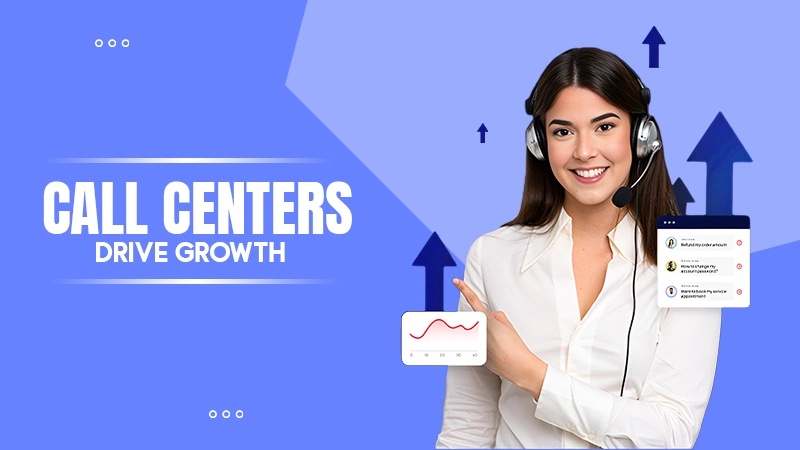It simply refers to the process of using technology to automate data collection and analysis. It allows companies to handle large datasets efficiently and effectively.
Automated Data Processing: Meaning, Benefits, Examples, and More
- What is Automated Data Processing?
- What are the Key Components of an Automated Data Processing System?
- Types of Automated Data Processing
- Top Automated Data Processing Tools in 2025
- What are the Benefits of Automated Data Processing?
- Real World Examples of Automated Data Processing
- Common Challenges in Automated Processing of Data
- Wrapping Up
- Frequently Asked Questions
In this technology-driven era, data is the fuel that drives every business. But with so much information being created every second, from customer interaction to daily operations, it is nearly impossible to handle everything manually.
That is where Automated Data Processing (ADP) enters the picture. ADP helps businesses collect, organize, and analyze data with minimal human effort. By 2026, the global business process automation is expected to hit $19.6 billion.
In this guide, I will explain the automated data processing definition, how it works, why it matters, and everything you need to help your organization stay ahead in a growing data-driven world.
What is Automated Data Processing?

Automated Data Processing (ADP) means using technology to collect, organize, and analyze data with little to no manual work. Instead of relying on people to handle every step, systems and software automatically handle repetitive data tasks.
Simply, it turns raw information into meaningful insights faster and more accurately than traditional methods. It allows businesses to manage large data, make quick decisions, and maintain consistency across operations.
Modern automated data processing tools also use AI and machine learning to learn from patterns, improve over time, and make smarter data decisions.
What are the Key Components of an Automated Data Processing System?
An automated data processing system is built on several connected stages that together ensure smooth and accurate handling of information. Here’s how it works:
1. Data Collection
The process starts with gathering data from various sources, like websites, forms, sensors, apps, or APIs. Strong collection practices ensure everything starts with clean and complete information.
2. Data Validation
The next step is to check for accuracy and completeness of the data. This filters out missing or incorrect entries so that only reliable data moves forward. It is like quality control, ensuring your analytics are not built on errors.
3. Data Transformation
Validated data is then converted into a usable format. This step involves removing duplicates, standardizing formats, or aggregating data for easier analysis.
4. Data Storage
After transformation, data is stored in databases or data warehouses for easy access. This centralized storage allows fast retrieval, smooth integration with analytics tools, and reliable backup for your crucial data.
5. Data Processing
This is the epicenter of automation, where systems analyze data and create insights. Whether it involves running algorithms, building reports, or predicting trends, the system processes the raw numbers into useful insights.
6. Data Output
At last, data is presented in some sort of actionable and usable form, like dashboards, alerts, reports, or even automated system actions.
ADP also protects data through encryption, role-based access, and audit trails to meet privacy standards. Together, these stages create a smooth and scalable system.
Types of Automated Data Processing
There are different methods of automation, which suit different business objectives. Here are some of the major types you should know:
- Batch Processing: Data is collected and processed in large sets according to a schedule. This is an excellent option for payroll, end-of-day reports, and other scheduled processing.
- Stream (Real-Time) Processing: In this method, data is processed as it is created. Modern infrastructure depends on real-time data, especially in areas such as online transactions, live monitoring, and IoT systems.
- Multiprocessing: Extensive datasets are divided into smaller datasets. These datasets are then processed simultaneously on several processors, speeding up complex computations.
- Distributed Processing: Data is distributed across a cluster of interconnected servers or systems, increasing performance and reliability. This type of ADP is popular in cloud computing and big data processing environments.
- Online Transaction Processing: It is used for managing multiple small and real-time transactions, such as in banking, booking systems, or e-commerce checkouts.
- Unified Batch-Stream Processing: Modern platforms have no merge batch and real-time processing, so that historical and live data can be handled under one system with shared logic.
Top Automated Data Processing Tools in 2025
As businesses handle more data than ever before, automated data processing tools have become essential for keeping everything organized, accurate, and fast. In 2025, there will be numerous platforms in the market. Here are some of the most reliable ones for smart automation:
- Apache Airflow: Popular among data engineers, Apache Airflow has made it easy to create, schedule, and monitor complex data pipelines. Its versatility has earned it a reputation as a go-to tool for both small businesses as well as companies managing large-scale workflows.
- Alteryx: Alteryx has become a favorite because of its drag-and-drop feature. It allows users to prepare and analyze data without coding. It offers great automated data processing equipment for teams looking for quick access to insights without being completely reliant on IT.
- Apache NiFi: NiFi provides automation of data flows from one system to another, collecting and transforming data in real time. It has a tremendous visual workflow capability that can even manage a complex integration easily.
- Talend Data Fabric: Talend provides a one-stop solution for both data integration and data quality. It ensures every dataset stays clean, secure, and synchronized across your entire organization.
- Zapier: It makes automation simple by connecting thousands of everyday apps. It is especially useful for small and mid-sized teams that want to automate routine data tasks across platforms like Google Sheets, Slack, or CRMs, without writing a single line of code.
Each of these tools shines in its own way. Some are good for analytical areas, and others for integrations or workflow. The choice depends on your data needs, company size, and automation goals.
What are the Benefits of Automated Data Processing?
Automated data processing can completely transform how a business handles information. Here are the key advantages of using ADP:
- Better efficiency: Automation cuts down repetitive manual work, allowing teams to focus on strategy, innovation, and problem-solving. Tasks that once took hours or days can now be completed in minutes.
- Higher accuracy: Human errors in data entry or calculations can lead to costly mistakes. Automated data processing equipment and systems use built-in validation and standardization to keep your data clean, accurate, and ready for analysis.
- Faster Decision-Making: With real-time data processing, insights reach decision-makers faster. This allows businesses to react quickly to trends, opportunities, or risks without waiting for manual reports.
- Cost savings: Though initial setup can require investment, automation quickly pays off by reducing labor, minimizing errors, and streamlining infrastructure costs.
- Scalable growth: As your business expands, automated systems easily adapt to growing data volumes without requiring extra manpower or slowing down performance.
Furthermore, ADP allows personalized and faster service through tailored recommendations, instant support, or accurate responses. All of this helps in building customer trust and satisfaction.
Real World Examples of Automated Data Processing

Automation is not just for tech companies; it is reshaping industries across the board. Here are some of the practical use cases of ADP in various industries:
1. Finance
Automated data processing systems can scan millions of transactions to spot suspicious activity instantly. They help you analyze credit scores, market trends, and financial risks in real time. Plus, automated reporting keeps financial institutions aligned with ever-changing regulations.
2. Healthcare
You can automate record updates to reduce errors and save the doctor’s crucial time. Tools can analyze large datasets or medical images to help detect diseases faster and more accurately. ADP can also help in forecasting patient outcomes and potential complications, supporting better treatment plans.
3. Retail
It helps in automatically tracking and restocking based on real-time demand. Plus, it can predict demand, improve logistics, and reduce excess inventory to optimize the supply chain.
4. Manufacturing
The manufacturing industry can benefit from the quality control feature. ADP can monitor production in real time to detect issues early and use data to predict equipment failures, allowing you to schedule timely repairs.
5. Marketing
Personalized campaigns can help you segment audiences automatically to deliver tailored content and offers. Real-time adjustments can help you update campaigns instantly based on performance data and audience behavior.
Common Challenges in Automated Processing of Data
Alright, automated data processing can boost efficiency and offer you multiple benefits. However, like every other thing, it comes with a few obstacles. Here are some of its common challenges:
- Setting up automation tools can be expensive. Software, hardware, and licenses add up, which may delay adoption for some businesses.
- Older systems often do not work smoothly with new automation tools. Fixing this may require custom solutions or system upgrades.
- Teams need time and training to get comfortable with ADP. Proper support is essential to make adoption easier.
- Automation depends on accurate and complete data. Poor data quality can lead to mistakes and reduce the overall benefits of automation.
- Automated data processes must follow data governance regulations like GDPR. Strong security measures are required to protect data and stay compliant.
As automation reduces repetitive tasks, employee responsibilities in the organization can shift. Managing these changes carefully is important to prevent resistance.
Wrapping Up
Investing in automated data processing is a wise investment for organizations of every size. When companies choose the right automation system, they can focus less on managing data and more on creating value. In short, when used correctly, ADP can help organizations stay competitive and thrive in a data-driven world.
Frequently Asked Questions
What is automated processing of data?
What is an example of automated data processing?
Real-time data analysis, risk assessment, and quick data-driven decision-making in various industries, such as finance, healthcare, retail, marketing, etc.
What is automatic data processing equipment?
The automation equipment includes servers, computer devices, software, peripherals, and other tools and systems to manage and process data correctly.
How to choose the right automated data processing system?
To select the right system for your organization, it is important to evaluate your needs, goals, and the type of processing required. You should also consider factors like budget, size of the company, scalability scope, security features, and customer support services before picking the solution.
Data loss is one of the most disruptive challenges in modern technology. Whether caused by ransomware, corrupted files, or human…
Brands – regardless of their size and niche – strive to promote their products and services to a broader audience.…
The current state of business today is the silent revolution. The world’s most successful companies quietly deploy astonishing efficiencies with…
Previously, creating a site demanded a lot of technical skills, an intricate nature, and the skill of professional developers. That…
Zero Trust operates on the belief that no one can automatically be trusted. Actually, no one gets access to your…
Getting a disk write error on Steam while downloading or updating a game is frustrating; there is no doubt about…
Have you ever clicked on a website and got a message saying – “ERR_SSL_PROTOCOL_ERROR”? Wondering what it means? This usually…
Who doesn’t want to increase the rate of satisfied customers for their business? Customers are honestly the lifeline of every…
Error code 429 is the most infamous HTTP issue that pops up when you hit the already set limit for…








